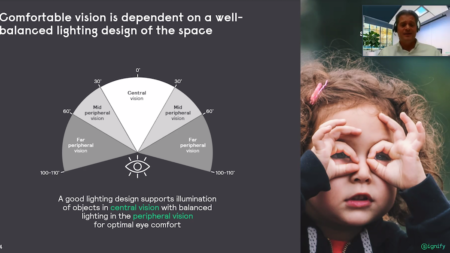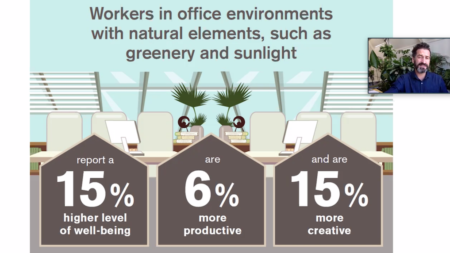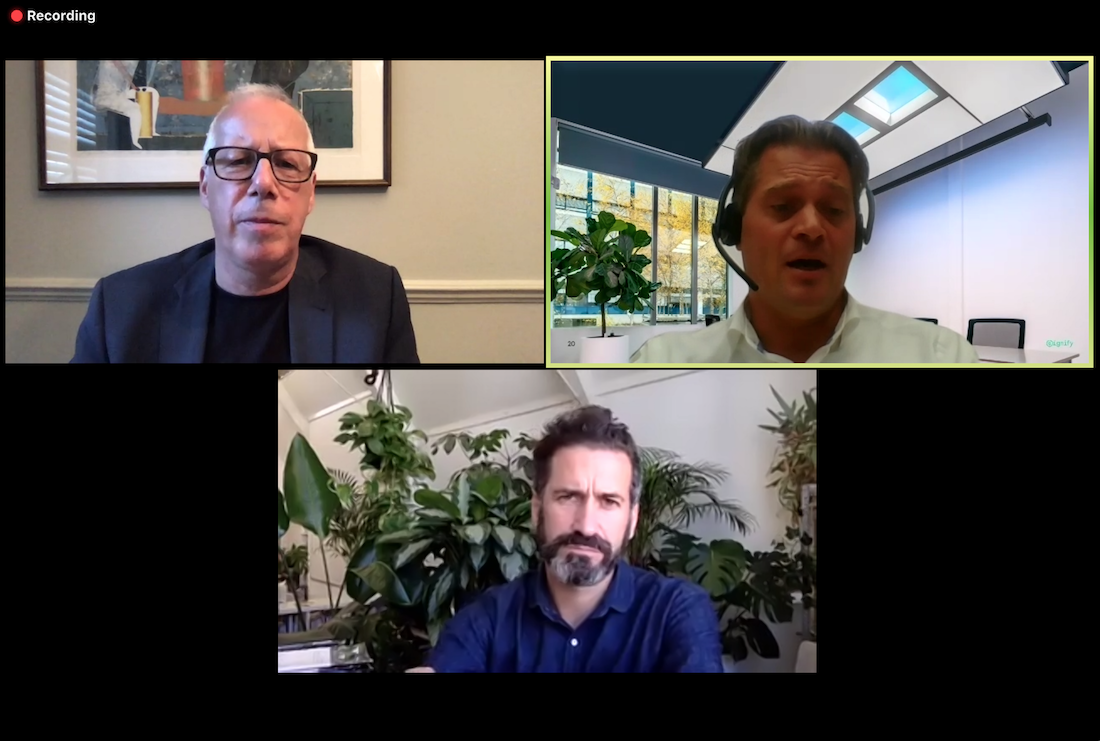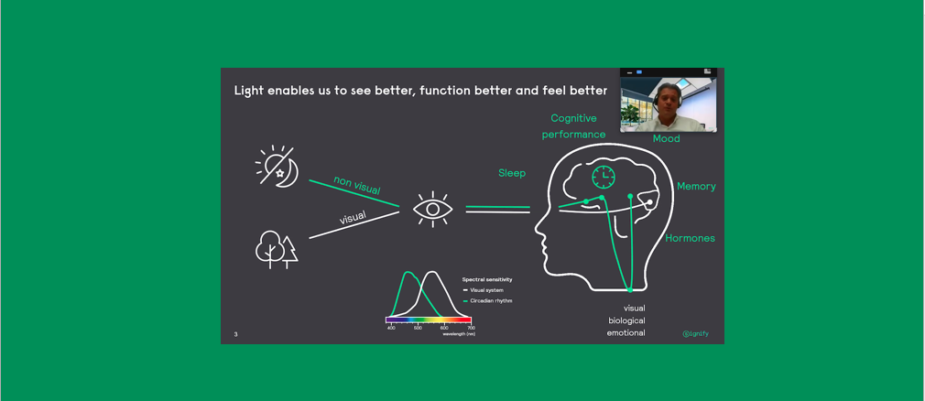
Is your light diet balanced and sufficient? It is a question that may appear curious, but it hides a theme that is often undervalued when it comes to working well-being in the context of the post corona virus ways of working: the connection between lighting and our natural biophilia in the context of home working. Oliver Heath, expert in architecture and sustainable design, and Wouter Boxhoorn, Business development manager of Signify, talked about it in the webinar “How to Create Healthy Office Spaces Post covid-19” organized by the Worktech Academy, which we have included in our WOWbinar column.
Among the different topics related to biophilia that emerged from the webinar that of the relationship between light, illumination and wellbeing in post corona virus ways of working is able to provide an interesting question.
The two speakers, moderated by the director of the Worktech Academy Jeremy Myerson, were two experts on the subject: Oliver Heath, who has just published together with Interface a series of design guides for creating positive spaces for work, while Wouter Boxhoorn presented NatureConnet, the lighting system by Signify, able to create the best lighting conditions for the different activities that take place in the office, favouring the circadian rhythm.
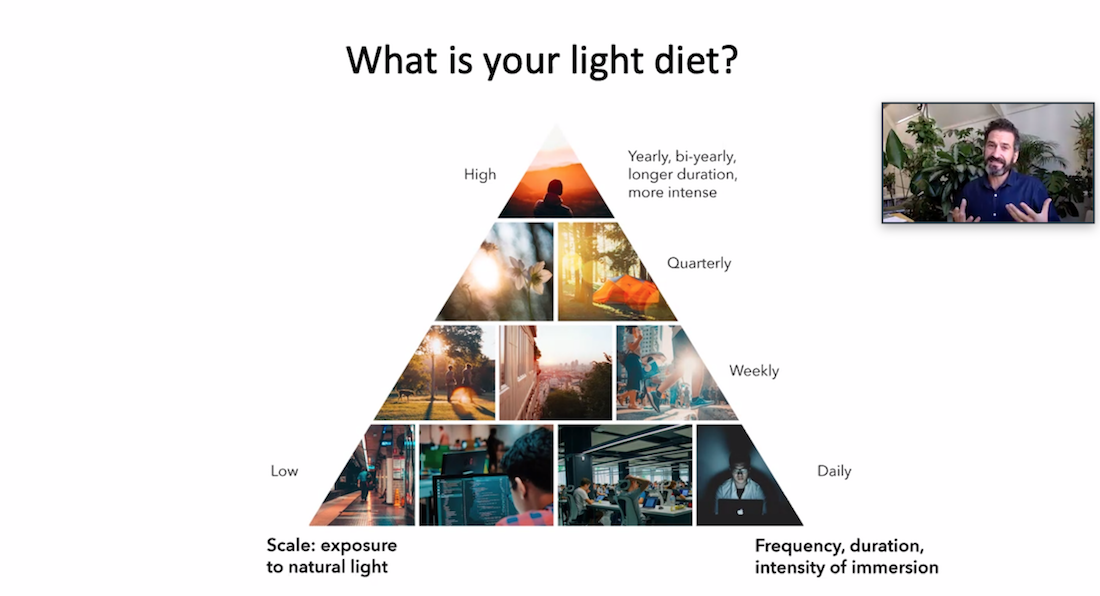
And it is precisely from this influence light has on our circadian rhythm that the two experts described the often lack of attention to lighting in the context of home working. In fact, if in the pre-pandemic office lighting was one of the most productive fields in office design, for what concerns home working this attention is likely to fail.
Hence the question: are we able to follow a balanced light diet in order to ensure our wellbeing and a healthy development of our circadian rhythm?
Moreover, light relates to the theme of our biophilic nature: sunlighting (or a technologically reproduced light similar natural one), as Boxhoorn explains, not only gives a better aesthetic experience, but also a better biological experience, in the sense that “we function better as a body”, and a better emotional experience, in the sense that it makes us “feel better”.
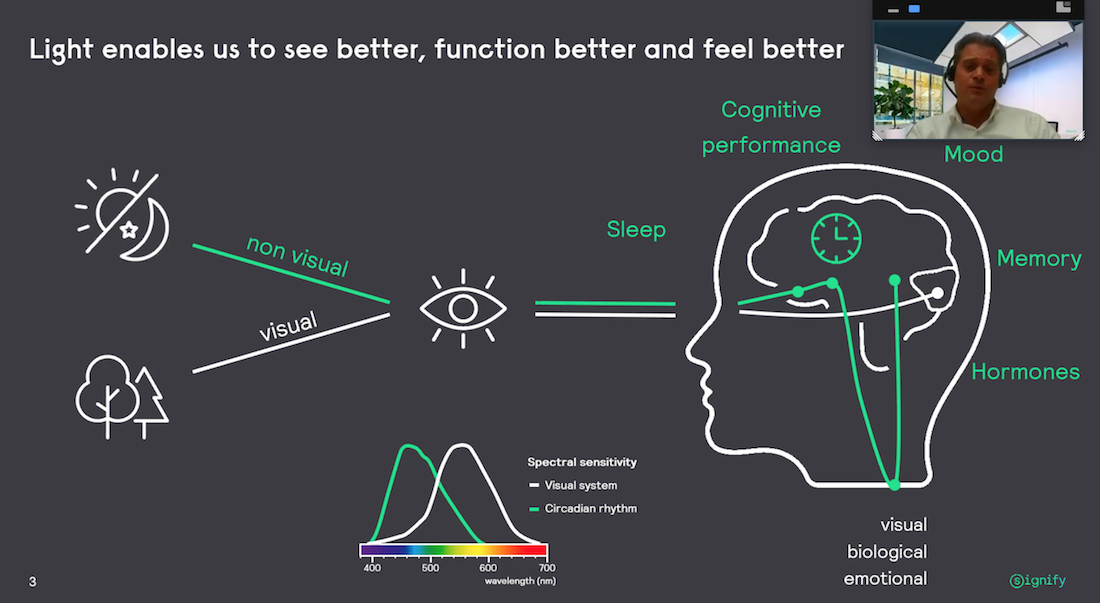
Yet, without taking care of lighting in home working, we generate a high level of physical and psychological stress. Without the need of leaving our house to go to the office (which allows us moments of exposure to sunlight), in front of the blue light of the monitor (which has proved capable of deceiving our body, disturbing the circadian rhythm) processes such as the synthesis of melatonin and cortisone are influenced, as well as our mood, while our cognitive functioning can drop from 10 to 25%.
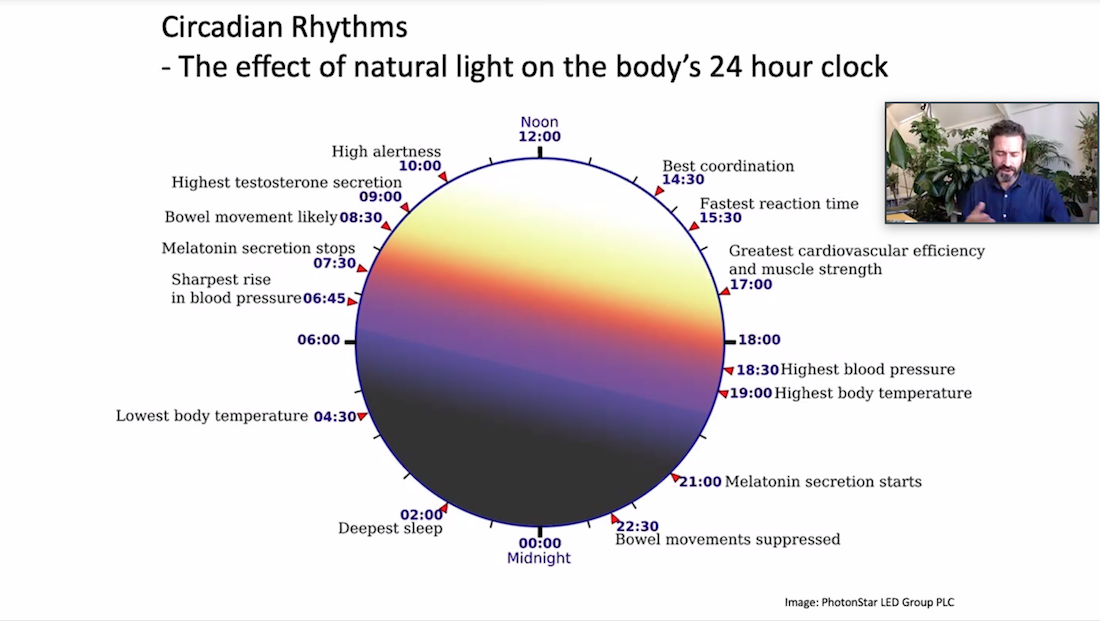
What to do then? Here are five tips:
– Move the desk near a window, cleaning the glass well in order to spread the sunlight as much as possible.
– Find at least 30 minutes to leave the house during the day and take a “photon shower“. This simple remedy has the power to make us happier, it has a great restorative effect on our body, also reactivating the sensory experience.
– Organize the lighting of your workstation in order that not only the object we are working on, but also the field around it is illuminated, so as not to hamper our peripheral vision.
– Use devices that allow you to select the type of light suitable for the activity that you are doing: for example, for an activity that requires concentration and carried out in the evening, a warm and softer light is ideal.
– Use instead of an audible alarm, an illumination alarm that gently wakes you with a natural, gradually brightening light.
Text by Gabriele Masi.

